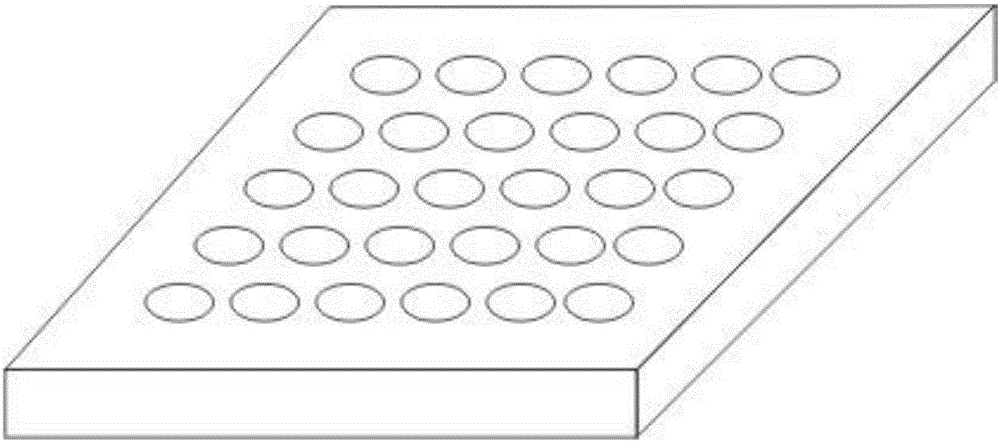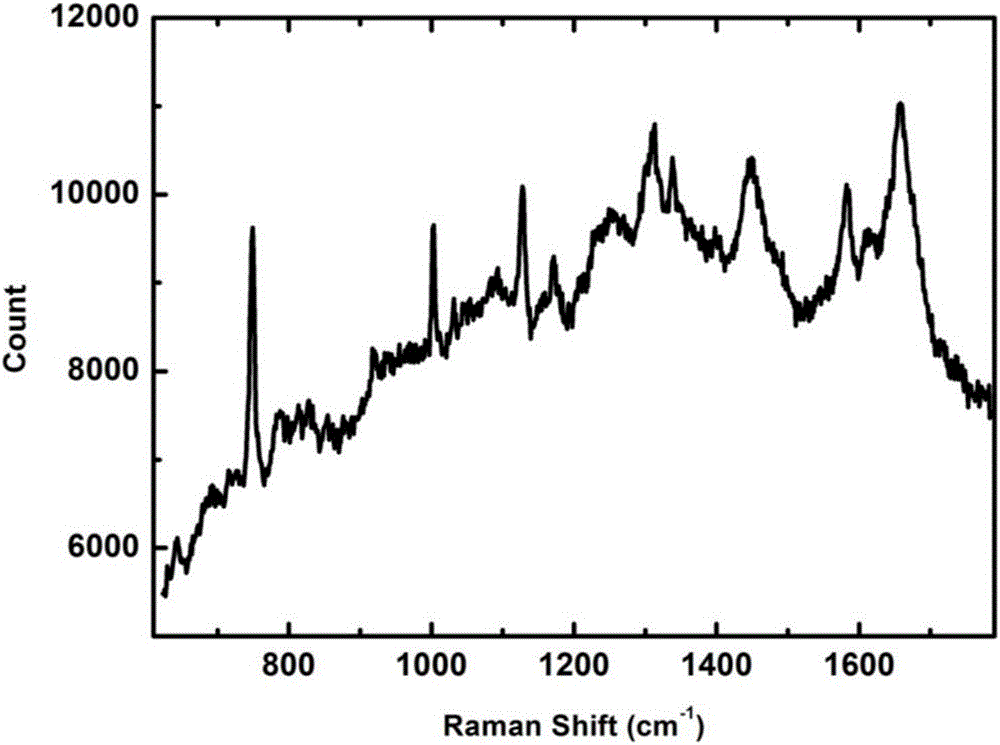Living single cell Raman spectrum detection chip
A technology of Raman spectroscopy detection and Raman spectroscopy, which is applied in the field of cell detection chips, can solve problems such as difficulty in use, high cost of use, and cumbersome processing of microfluidic chips, and achieve the advantages of convenient operation, simple tools, and guaranteed stability Effect
- Summary
- Abstract
- Description
- Claims
- Application Information
AI Technical Summary
Problems solved by technology
Method used
Image
Examples
Embodiment 1
[0017] A live single-cell Raman spectrum detection chip 21, its structural features are as follows: the chip 21 is composed of a quartz substrate without Raman spectrum characteristics, one side of the substrate has a micro-pits structure arranged in a quadrilateral array, and the micro-pits The surface diameter is 15.4um and the depth is 4.4um, which is used to separate and fix neuroblastoma single cells, and the diameter of neuroblastoma single cells is 11um;
[0018] The shape of the micro-pit in the chip 21 is a spherical crown, and it is prepared by a micro-lithography processing method. The specific process steps include: first spin-coating a photoresist on the surface of the cleaned quartz substrate, and then using the same micro-pit distribution. The photolithographic mask plate is exposed, and after development, it is placed in hydrofluoric acid etching solution to etch the required micro-pit array structure, such as figure 1 shown.
[0019] Using the invented chip 2...
Embodiment 2
[0021] A live single-cell Raman spectrum detection chip has the following structural features: the chip is composed of a magnesium fluoride substrate without Raman spectrum characteristics, and one side of the substrate has a micro-pit structure arranged in a hexagonal array. The surface diameter of the pit is 13.2um, and the depth is 7.2um, which is used to separate and fix ovarian cancer cells, and the diameter of ovarian cancer cells is 12um;
[0022] The shape of the micro-pits in the chip is cylindrical, and it is prepared by micro-lithography processing method. The specific process steps include: first, spin-coat photoresist on the surface of the cleaned quartz substrate, and then use the same light distribution as the micro-pits to The mask plate is etched for exposure, and after development, a reactive ion etching process is used to etch out the required micro-pit array structure.
[0023] Using the invented chip, the Raman spectrum detection method of living single ce...
PUM
 Login to View More
Login to View More Abstract
Description
Claims
Application Information
 Login to View More
Login to View More - R&D
- Intellectual Property
- Life Sciences
- Materials
- Tech Scout
- Unparalleled Data Quality
- Higher Quality Content
- 60% Fewer Hallucinations
Browse by: Latest US Patents, China's latest patents, Technical Efficacy Thesaurus, Application Domain, Technology Topic, Popular Technical Reports.
© 2025 PatSnap. All rights reserved.Legal|Privacy policy|Modern Slavery Act Transparency Statement|Sitemap|About US| Contact US: help@patsnap.com



